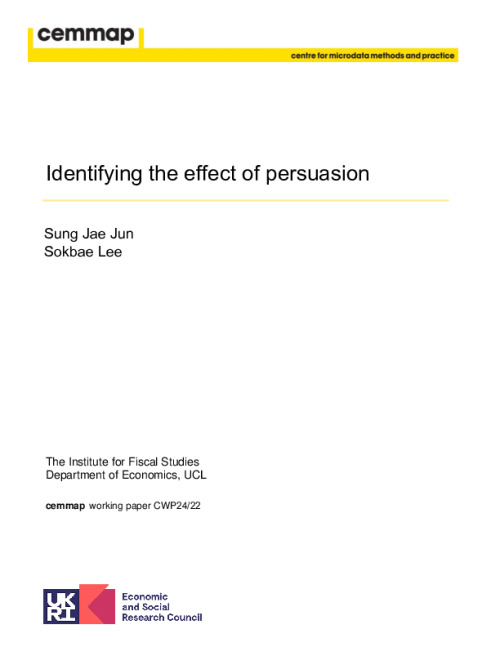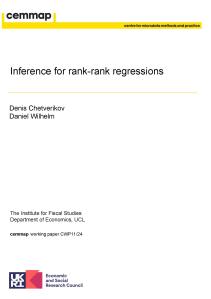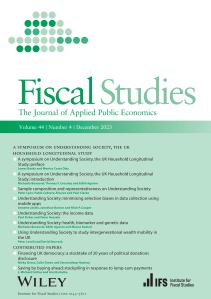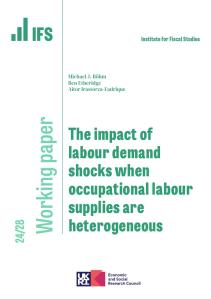Downloads

CWP2422-Identifying-the-effect-of-persuasion.pdf
PDF | 644.15 KB
This paper examines a commonly used measure of persuasion whose precise interpretation has been obscure in the literature. By using the potential outcome framework, we define the causal persuasion rate by a proper conditional probability of taking the action of interest with a persuasive message conditional on not taking the action without the message. We then formally study identification under empirically relevant data scenarios and show that the commonly adopted measure generally does not estimate, but often overstates, the causal rate of persuasion. We discuss several new parameters of interest and provide practical methods for causal inference.
Authors

Pennsylvania State University

Research Fellow Columbia University
Sokbae is an IFS Research Fellow and a Professor at Columbia University, with an interest in Econometrics, Applied Microeconomics and Statistics.
Working Paper details
- DOI
- 10.47004/wp.cem.2022.2422
- Publisher
- cemmap
Suggested citation
Jun, S and Lee, S. (2022). Identifying the effect of persuasion. 24/22. London: cemmap. Available at: https://ifs.org.uk/publications/identifying-effect-persuasion-1 (accessed: 30 June 2024).
More from IFS
Understand this issue

Gender norms, violence and adolescent girls’ trajectories: Evidence from India
24 October 2022

What are the challenges in getting debt on a falling path?
28 June 2024

What is the two-child limit in benefits?
27 June 2024
Policy analysis

ABC of SV: Limited Information Likelihood Inference in Stochastic Volatility Jump-Diffusion Models
We develop novel methods for estimation and filtering of continuous-time models with stochastic volatility and jumps using so-called Approximate Bayesian Compu- tation which build likelihoods based on limited information.
12 August 2014

Assessing the economic benefits of education: reconciling microeconomic and macroeconomic approaches
This CAYT report discusses the strengths and limitations of several approaches to assessing the effect of education on productivity.
14 March 2013

Misreported schooling, multiple measures and returns to educational qualifications
We provide a number of contributions of policy, practical and methodological interest to the study of the returns to educational qualifications in the presence of misreporting.
1 February 2012
Academic research

Inference for rank-rank regressions
28 May 2024

Understanding Society: minimising selection biases in data collection using mobile apps
2 February 2024

The impact of labour demand shocks when occupational labour supplies are heterogeneous
28 June 2024